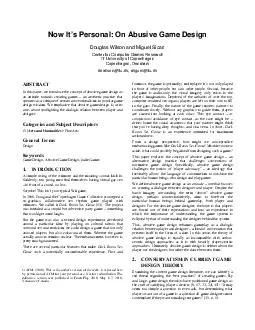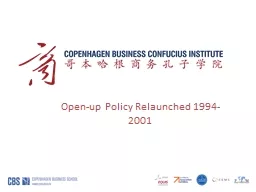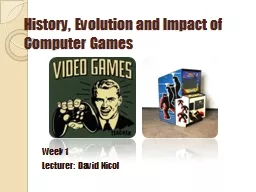PDF-Now Its Personal On Abusive Game Design Douglas Wilson and Miguel Sicart Center for Computer
Author : marina-yarberry | Published Date : 2015-03-16
dk miguelitudk ABSTRACT In this paper we introduce the concept of abusive game design as an attitude towards creating games an aesthetic p ractice that operates
Presentation Embed Code
Download Presentation
Download Presentation The PPT/PDF document "Now Its Personal On Abusive Game Design ..." is the property of its rightful owner. Permission is granted to download and print the materials on this website for personal, non-commercial use only, and to display it on your personal computer provided you do not modify the materials and that you retain all copyright notices contained in the materials. By downloading content from our website, you accept the terms of this agreement.
Now Its Personal On Abusive Game Design Douglas Wilson and Miguel Sicart Center for Computer: Transcript
Download Rules Of Document
"Now Its Personal On Abusive Game Design Douglas Wilson and Miguel Sicart Center for Computer"The content belongs to its owner. You may download and print it for personal use, without modification, and keep all copyright notices. By downloading, you agree to these terms.
Related Documents














